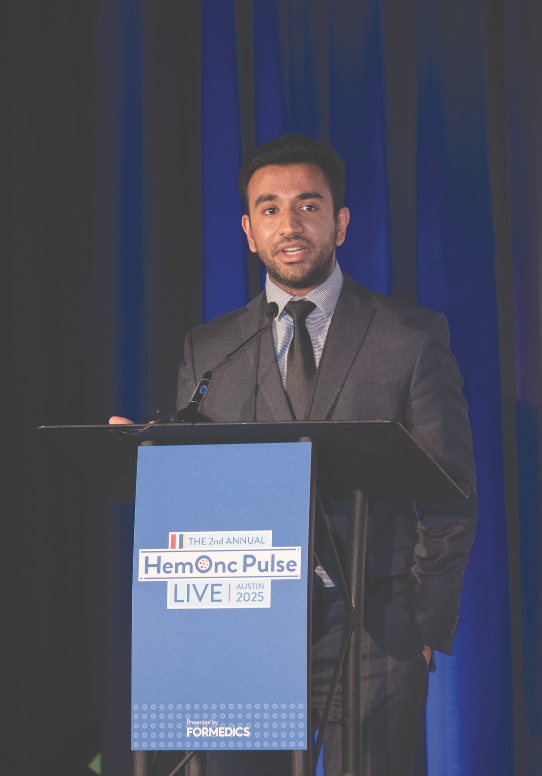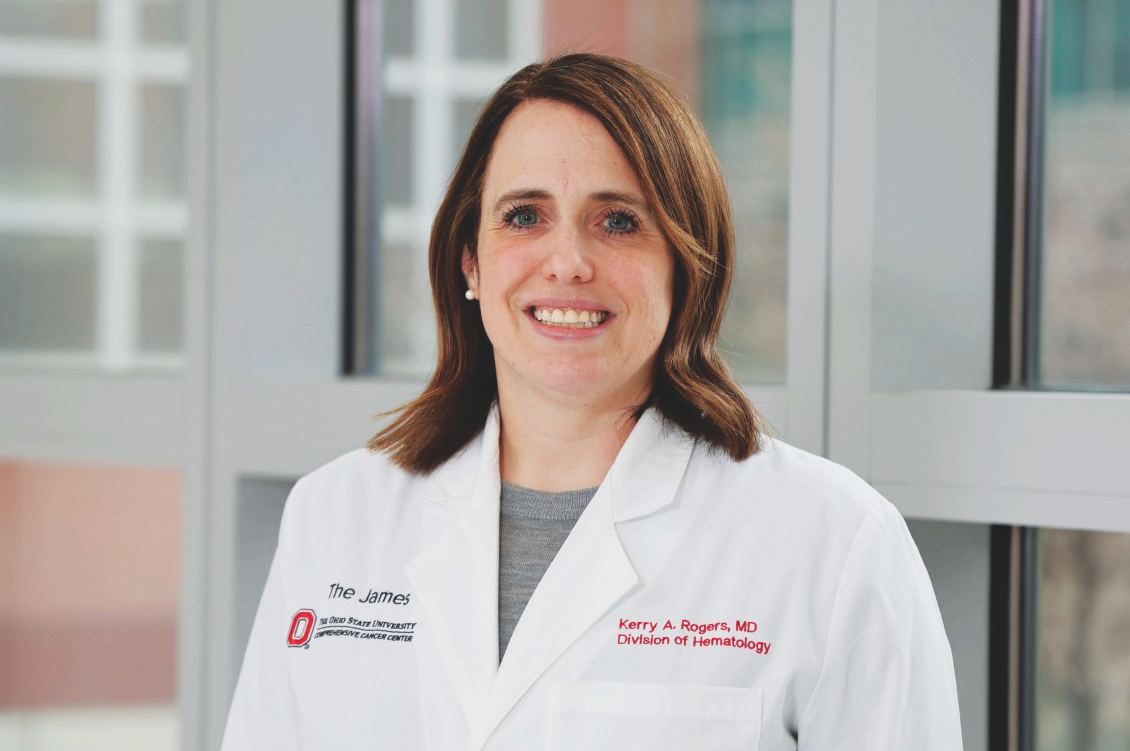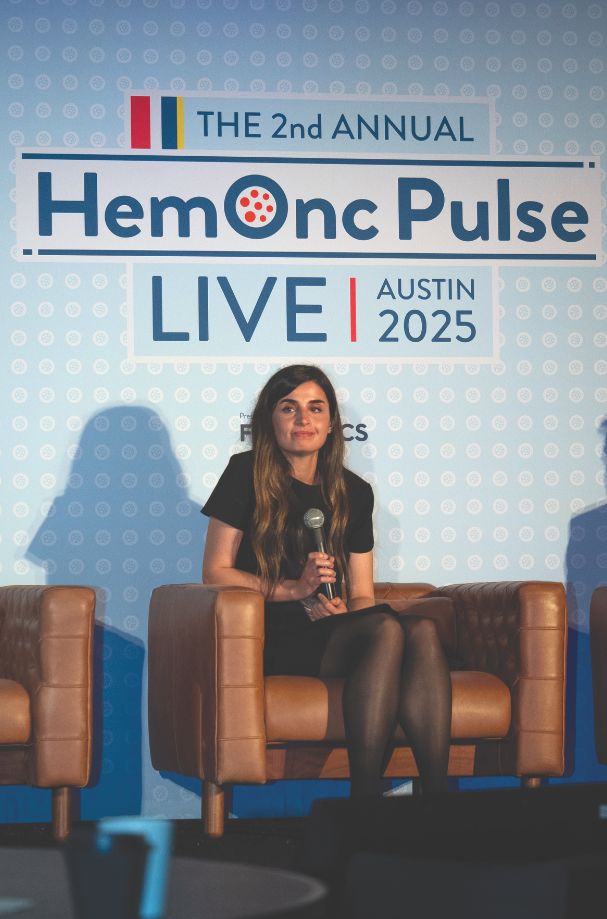
A deeper understanding of ALL has led to more targeted approaches and personalized treatments for this patient population. As novel treatments including CAR-T therapies emerge, clinicians are still learning which therapy to give and when.
Like many other cancer types, advances in the understanding of acute lymphoblastic leukemia (ALL) during the last decade or more have allowed for more personalized treatment approaches.
These advances include a better understanding of the molecular genetics of the disease, use of minimal residual disease (MRD) to guide treatment decisions, refinement of risk-adapted treatment algorithms, and the development of targeted therapies. Together, these developments have led to improved survival outcomes for patients with ALL, a highly heterogeneous disease.
“ALL is primarily a pediatric disease, and treatment in pediatrics and adolescent and young adult populations has led to a lot of the advances we have seen,” said Selina M. Luger, MD, Professor of Medicine at the Hospital of the University of Pennsylvania. “Historically, ALL has probably been one of the earliest disease types to begin to personalize therapy based on factors such as age, gender, and white blood cell count. Over time, we have been able to further refine our personalization, taking into consideration patients’ response to initial therapy in our treatment algorithms.”
For example, ALL was one of the first diseases where doses of medication during maintenance depended on patients’ blood counts as they responded to therapy rather than adhering to a
standard dosing schedule, she said. Another example is that some groups treat males with three years of maintenance therapy and females with only two years.1
However, induction chemotherapy in adults still takes a mostly one-size-fits-all approach that employs multiagent chemotherapy with corticosteroids, and—in the case of Philadelphia (Ph) chromosome-positive disease—tyrosine kinase inhibitors (TKIs).
“This one-size-fits-all approach has resulted in overall survival (OS) of approximately 57% for patients 30 years and younger, about 38% for patients aged 30 to 59, and 12% for patients older than 60 years,” said Anastasios Raptis, MD, PhD, a hematologist/oncologist at the University of Pittsburgh Medical Center Hillman Cancer Center and Associate Professor of Medicine at the University of Pittsburgh School of Medicine.
“There is a clear need to improve on the outcomes of these patients, in particular the older population,” Dr. Raptis said. “Many of the new strategies being explored include the use of these targeted therapies.”
Taking Aim
While the presence of the Ph chromosome allowed us to identify and treat that subset of patients with specific therapy for several decades, some of the most recent advancements in targeted therapies in ALL have been in the relapsed and refractory setting.
The 2017 U.S. Food and Drug Administration (FDA) full approval of the CD19 bispecific T-cell engager blinatumomab in Ph-negative or Ph-positive
disease provided a new treatment option for this patient population. The approval was granted for adult and pediatric patients in first or second complete remission with MRD greater than or equal to 0.1%.2
The TOWER trial, which evaluated blinatumomab in adults with heavily pretreated B-cell precursor ALL, showed that blinatumomab significantly improved OS compared with chemotherapy. Median OS was 7.7 months compared with 4.0 months with chemotherapy (hazard ratio, 0.71; 95% CI, 0.55-0.93; P=.01).3
Shortly after the blinatumomab approval, the antibody drug conjugate inotuzumab ozogamcin
was granted approval for adults with relapsed/refractory B-cell ALL.4 The INO-VATE ALL trial tested inotuzumab in patients with relapsed or refractory disease who had 5% or more bone marrow blasts. The complete remission rate was 80.7% with inotuzumab compared with 29.4% with standard chemotherapy. Median progression-free survival was 5.0 months compared with 1.8 months (P<.001), and median OS was 7.7 months compared with 6.7 months (P=.04).5
According to Marlise R. Luskin, MD, MSCE, Assistant Professor of Medicine at Harvard Medical School, both of these drugs were game changers in the relapsed/refractory setting.
“Prior to that, if ALL was refractory or relapsed, it was very difficult to get patients back to remission, and any second remissions were not durable,” Dr. Luskin said.
Research to date indicates that inotuzumab appears to be more effective in patients with bulky disease compared with blinatumomab. In contrast, blinatumomab may be more effective in patients with MRD-positive, low-burden disease.
Each drug has unique adverse effects as well. Clinicians using blinatumomab must be aware of associated neurological adverse events—one of the main reasons for dose interruptions—and cytokine release syndrome. Common adverse events seen with inotuzumab include hepatic toxicity and
sinusoidal obstruction syndrome.6
Both agents are being explored in the upfront settings of B-cell ALL as well.
“The question always becomes, now that we have these tools, can we use them in different phases of the disease to get ahead of the problem,” Dr. Luskin said. “Why wait for failure? That is where a lot of the newest research is focused.”
The combination of the TKI ponatinib and blinatumomab, both used as monotherapies in Ph-positive ALL, were tested in combination in a recent phase II trial of 55 patients with newly diagnosed or relapsed/refractory disease. Complete molecular response was seen in 96% of newly diagnosed patients and 92% of those with relapsed/refractory disease. Two-year OS was 93%.7
“In Ph-positive disease, we used to try to get those patients to transplant,” said John Molina, MD, MEd, a Hematology/Oncology Specialist at Cleveland Clinic. “Now in this era of targeted therapy, we are testing regimens to see if we can avoid transplant in certain populations.”
Another study presented at the 2022 American Society of Clinical Oncology (ASCO) Annual Meeting tested the use of hyper-CVAD (cyclophosphamide, vincristine, doxorubicin, and dexamethasone) with sequential blinatumomab plus inotuzumab in Ph-negative ALL and showed a 95% MRD negativity rate with a three-year OS rate of 85%.8
“These trials are testing if we can get better and more durable remissions if we use these therapies sooner,” Dr. Molina said.
These agents have significantly improved the outcomes in these settings but are by no means considered curative, according to Dr. Raptis.
“Allogeneic hematopoietic stem cell transplant in second complete remission and beyond is the only potential curative approach, but these agents have helped patients in the relapsed setting get to MRD-negative status and the depth of response needed to proceed to transplant,” Dr. Raptis said.
Role of Transplant
One of the most important ongoing questions in the treatment of ALL is determining who needs transplant and when, Dr. Molina said.
“Knowing that transplant carries its own morbidity and mortality risks, there is always a balance,” Dr. Molina said. “Historically, it was always felt that patients needed transplant, but now we are trying to identify if there are patients where we can avoid transplant or who can go on to transplant later.”
With ever-improving next-generation sequencing testing, clinicians can get a better picture of a patient’s remission, Dr. Molina said. They are learning that there may be a subset of patients who would have historically been taken to transplant and may be able to avoid it now.
As it stands, patients who achieve second complete remission and are good candidates for transplant in terms of physical condition, age, and comorbidities should proceed to transplant, Dr. Raptis said.
For patients with first complete remission who achieve MRD-negative status, observation may be an option, Dr. Raptis said. Indeed, in the TKI era, patients with Ph-positive ALL who achieve complete molecular remission have good outcomes without transplant.
A recent retrospective study looked at 230 patients with Ph-positive disease treated with
induction therapy who had attained complete molecular response within 90 days of diagnosis. Multivariable analysis showed that allogeneic transplant was not associated with improved OS or relapse-free survival.9
“They can be observed and proceed to allogeneic transplant if the disease relapses and they achieve second complete remission status,” Dr. Raptis said. “In contrast, patients who have MRD-positive disease after initial induction therapy should be considered for transplant.”
CAR-T
Chimeric antigen receptor (CAR) T-cell therapy has also been a valuable addition to the treatment of relapsed/refractory ALL. There are currently two approved therapies for ALL. In 2017, the FDA approved CD19-directed tisagenlecleucel for patients up to age 25 years with B-cell precursor ALL that is refractory or in second or later relapse.10 Tisagenlecleucel was tested in a single-arm trial of 63 patients and produced an overall remission rate of 82.5%, with 63% of patients experiencing complete remission. Since then, additional studies have shown that tisagenlecleucel maintains durable responses at five years and demonstrated activity and safety in young children and infants.11,12
In 2021, the FDA approved another CD19-directed therapy, brexucabtagene autoleucel, for adult patients with relapsed or refractory B-cell precursor ALL.13 This approval was based on results from the ZUMA-3 study, in which of the 54 evaluable patients, 52% achieved complete response within three months.13
The positioning of these therapies in patients with ALL is not as straightforward as it is in patients with lymphoma.
“Figuring out where to position CAR T-cell therapy most effectively is the challenge,” said Dr. Luskin. “Right now, it is something we use for disease that is relapsed or not responding to conventional chemotherapy, similar to how we use off-the-shelf antibodies.
“Even though the manufacturing of CAR T cells is relatively short—a couple of weeks in most situations—often lymphoma patients are stable enough that they don’t have to receive significant treatment to stay stable during that manufacturing phase. That can be more challenging in patients with ALL where we have to strategize bridging therapy.”
Too much therapy may result in complications that make the patient ineligible for CAR T-cell therapy, but if patients are undertreated the disease could become explosive, also making them ineligible.
Dr. Luger’s institution participated in clinical trials of CAR T-cell therapy in ALL, and she admitted that the barriers to use of the treatment are likely lower at her institution than elsewhere in the country.
Regardless, she agreed that the manufacturing process remains the biggest barrier to successful use of CAR T-cell therapy in ALL.
“You often can’t keep people off the therapies that they need to be off of long enough to harvest T cells to make CAR T-cell therapy,” Dr. Luger said.
Dr. Luskin said there are also definitely differences of opinion on how best to employ this therapy in ALL.
One obvious use for Dr. Luskin is in a patient who has relapsed after transplant because those patients have limited treatment options available that could produce durable disease control. However, in a patient who has not yet undergone transplant, use of CAR T-cell therapy will depend on what drugs that patient has already seen, Dr. Luskin said.
“There are patients who are relapsed or refractory after chemotherapy but have not yet seen novel agents,” Dr. Luskin said. “Some patients can respond quite well to these novel agents, for example, inotuzumab, and that can bridge them to transplant. That may be a simple and more effective approach [than CAR-T].”
CAR T-cell therapy also offers effective and durable disease control to patients who may not be good candidates for transplant.
“CAR-T in ALL was the poster child for CAR T-cell therapy when results of ELIANA came out,” Dr. Molina said. “Now we are learning how to use this tool effectively.”
That knowledge will require more research into important questions like: How can CAR T-cell therapy be made more effective? Does the amount of disease burden affect outcomes? Are there specific gene rearrangements that are associated with more resistance to CAR T-cell therapy?
Dr. Molina said it is also still unknown how novel targeted therapies might affect the use and efficacy of CAR T-cell therapy.
“Initially, we didn’t know if exposure to blinatumomab would put patients at risk for CAR-T failure, where now it appears if response to blinatumomab predicts response to CAR-T,”14 Dr. Molina said. “We are learning more about the order of operations. What therapy to give and when.”
Emerging Options/Therapies
Even as clinicians work to figure out the best way to use available treatment options, more work is needed on new therapies and new combinations.
Currently available CAR T-cell therapies target CD19, but there are other CAR products in development that target CD5 or CD7 for ALL, Dr. Raptis said. Early safety and efficacy results of a phase I trial of donor-derived CD5 CAR T-cells in T-cell ALL were presented at the 2022 ASCO Annual Meeting.15
BCL2 inhibitor venetoclax, which is approved for chronic lymphocytic leukemia and acute myeloid leukemia, is also being explored as a single agent or in combination with chemotherapy or targeted agents in ALL.
There are also early studies exploring the use of CD38 monoclonal antibodies—like daratumumab, bispecific antibodies, and CAR T-cell therapies for patients with CD38-expressing ALL.16,17
“There will be more exciting agents explored and available in the next few years,” Dr. Luskin said. “The challenge will be for everybody to work together because these are rare patients. We have to get patients referred to academic centers so we can offer them novel therapies to continue to learn more about this disease.”
Leah Lawrence is a freelance health writer and editor based in Delaware.
References
- Teachey DT, Hunger SP, Loh ML. Optimizing therapy in the modern age: differences in length of maintenance therapy in acute lymphoblastic leukemia. Blood. 2021;137(2):168-177.
- U.S. Food & Drug Administration. FDA grants regular approval to blinatumomab and expands indication to include Philadelphia chromosome-positive B cell. July 11, 2017. Accessed October 21, 2022. www.fda.gov/drugs/resources-information-approved-drugs/fda-grants-regular-approval-blinatumomab-and-expands-indication-include-philadelphia-chromosome
- Kantarjian H, Stein A, Gokbuget N, et al. Blinatumomab versus chemotherapy for advanced acute lymphoblatic leukemia. N Engl J Med. 2017;376(9):836-847.
- U.S. Food & Drug Administration. FDA approves inotuzumab ozogamicin for relapsed or refractory B-cell precursor ALL. August 17, 2017. Accessed October 21, 2022. www.fda.gov/drugs/resources-information-approved-drugs/fda-approves-inotuzumab-ozogamicin-relapsed-or-refractory-b-cell-precursor-all
- Kantarjian HM, DeAngelo DJ, Stelljes M, et al. Inotuzumab ozogamicin versus standard therapy for acute lymphoblastic leukemia. N Engl J Med. 2016;375(8):740-753.
- Conde-Royo D, Juarez-Salcedo LM, Dalia S. Management of adverse effects of new monoclonal antibody treatments in acute lymphoblastic leukemia. Drugs Context. 2020;9:2020-7-2.
- Short N, Kantarjian H, Konopleva, et al. Ponatinib and blinatumomab for patients with Philadelphia chromosome-positive acute lymphoblastic leukemia: updated results from a phase II study. Abstract S114. Presented at the 2022 EHA Congress, June 9-17, 2022.
- Short NJ, Kantarjian H, Ravandi F, et al. A phase II study of hyper-CVAD with sequential blinatumomab (Blina), with or without inotuzumab ozogamicin (INO), in adults with newly diagnosed B-cell acute lymphoblastic leukemia (ALL). J Clin Oncol. 2022. doi:10.1200/JCO.2022.40.16_suppl.7034
- Ghobadi A, Slade M, Kantarjian HM, et al. The role of allogeneic transplant for adult Ph+ ALL in CR1 with complete molecular remission: a retrospective analysis. Blood. 2022. doi:10.1182/blood.2022016194
- U.S. Food & Drug Administration. FDA approves tisagenlecleucel for B-cell ALL and tocilizumab for cytokine release syndrome. September 7, 2017. Accessed October 21, 2022. www.fda.gov/drugs/resources-information-approved-drugs/fda-approves-tisagenlecleucel-b-cell-all-and-tocilizumab-cytokine-release-syndrome
- Rives S, Maude AL, Hiramatsu H, et al. Tisagenlecleucel in pediatric and young adult patients with relapsed/refractory B-cell acute lymphoblastic leukemia: final analyses from the ELIANA study. Abstract S112. Presented at the 2022 EHA Congress, June 9-17, 2022.
- Ghorashian S, Jacoby E, De Moerloose B, et al. Tisagenlecleucel therapy for relapsed or refractory B-cell acute lymphoblastic leukaemia in infants and children younger than 3 years of age at screening: an international, multicentre, retrospective cohort study. Lancet Haematol. 2022. doi:10.1016/S2352-3026(22)00225-3
- U.S. Food & Drug Administration. FDA approves brexucabtagene autoleucel for relapsed or refractory B-cell precursor acute lymphoblastic leukemia. October 1, 2021. Accessed October 21, 2022. www.fda.gov/drugs/resources-information-approved-drugs/fda-approves-brexucabtagene-autoleucel-relapsed-or-refractory-b-cell-precursor-acute-lymphoblastic
- Myers RM, Taraseviciute A, Steinberg SM, et al. Blinatumomab nonresponse and high-disease burden are associated with inferior outcomes after CD19-CAR for B-ALL. J Clin Oncol. 2022;40(9):932-944. doi:10.1200/JCO.21.01405
- Pan J, Tan Y, Shan L, et al. Phase I study of donor-derived CD5 CAR T cells in patients with relapsed or refractory T-cell acute lymphoblastic leukemia. J Clin Oncol. 2022. doi:10.1200/JCO.2022.40.16_suppl.7028
- Murthy GSG, Kearl T, Cui W, et al. A phase 1 study of CD38-bispecific antibody (XmAb18968) for patients with CD38 expressing relapsed/refractory acute myeloid leukemia and T-cell acute lymphoblastic leukemia. J Clin Oncol. 2022. doi:0.1200/JCO.2022.40.16_suppl.TPS7070
- Hogan LE, Bhatla T, Teachey DT, et al. Efficacy and safety of daratumumab (DARA) in pediatric and young adult patients (pts) with relapsed/refractory T-cell acute lymphoblastic leukemia (ALL) or lymphoblastic lymphoma (LL): results from the phase 2 DELPHINUS study. J Clin Oncol. 2022. doi:10.1200/JCO.2022.40.16_suppl.10001






 © 2025 Mashup Media, LLC, a Formedics Property. All Rights Reserved.
© 2025 Mashup Media, LLC, a Formedics Property. All Rights Reserved.